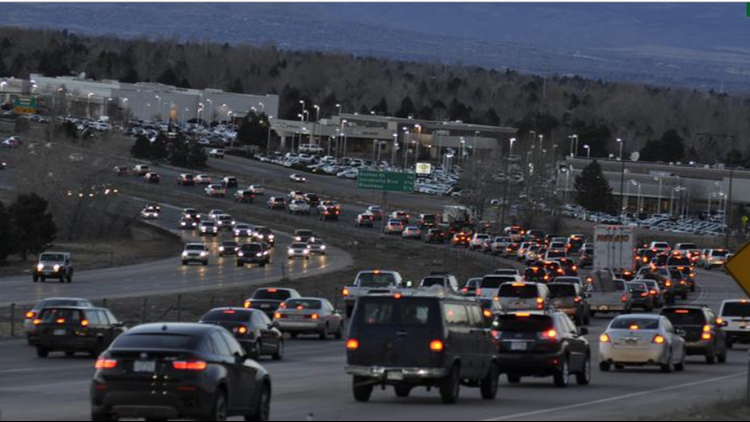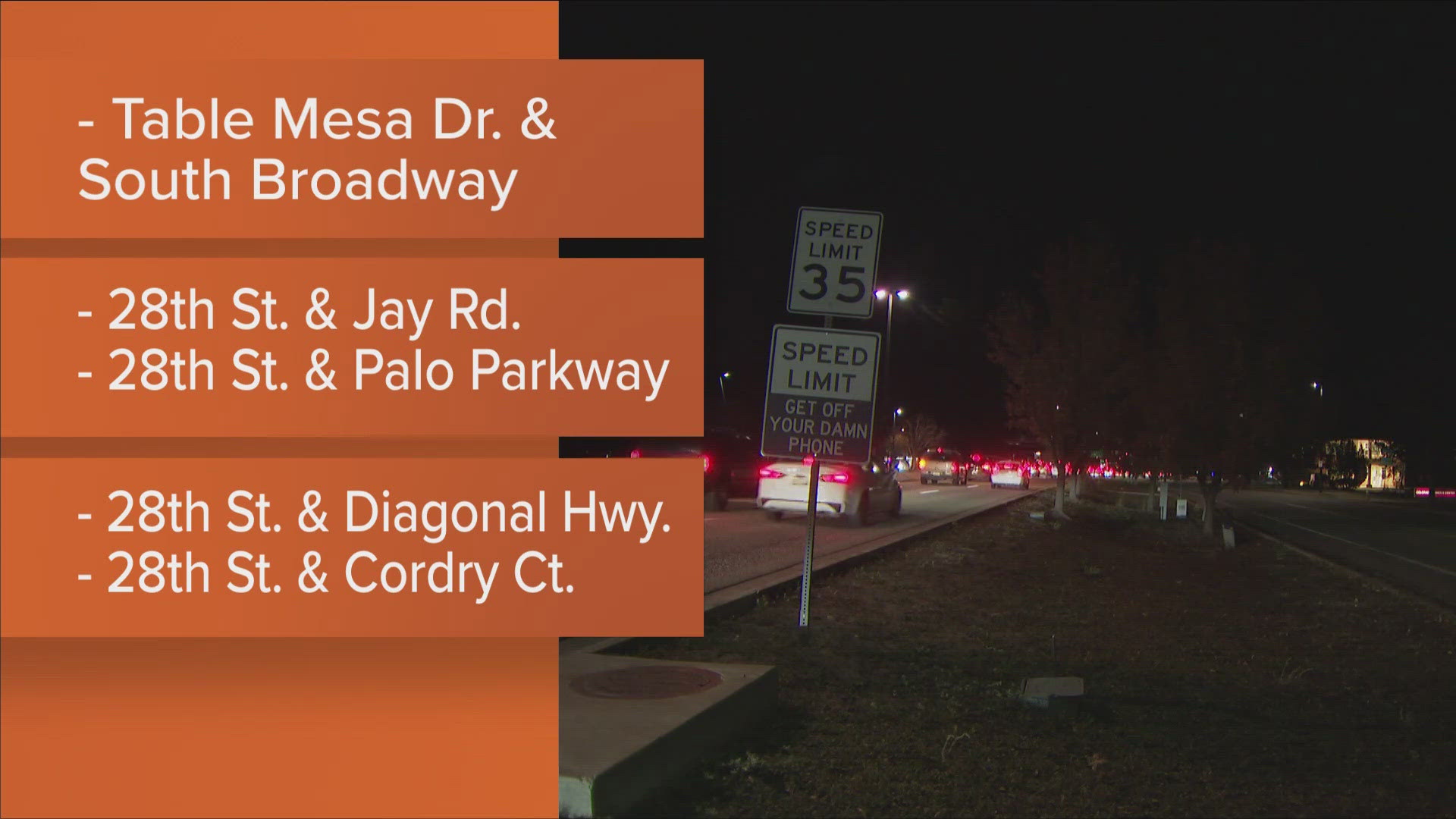Commute times (and the stress that often comes with them) are likely to increase for those who travel along Interstate 70, as the "Central 70" project is set to begin later on in July.
The Colorado Department of Transportation's "Central 70" project involves removing the I-70 viaduct across north Denver, sinking a portion of the highway near I-25 and expanding the highway between I-25 and Chambers Road via toll lanes.
Drivers will first see (later this month) road crews shut down 46th Avenue between York Street and Brighton Boulevard to allow for the construction of a railroad detour under the I-70 viaduct near the Purina factory. And that's not saying anything about the noise levels nearby residents will have to endure.
Also ahead in the schedule is the widening project on I-70 between Chambers and Quebec. While the project is slated to last from 2018 to 2022, CDOT said the whole point of this project is to alleviate traffic headaches.
Here's the thing, the commute to Denver, which is exceedingly stressful, is taking longer and longer. The numbers from a pair of recent studies put it in stone.
Human-resource consulting firm Robert Half checked with their recruiters and found out late last year that Coloradans rate the commute to Denver as the 13th most stressful in the country -- and the 17th longest by average (46 minutes).
That's on top of a study put out by Apartment List that shows "super-commutes" -- commutes longer than 90 minutes -- in the Denver area grew by over 40 percent from 2005 to 2016.
Growing number of people traveling 90-plus minutes to work
The Apartment List study breaks down the information on super-commuters -- and commuting in general -- for Denver. The city's commuters use public transportation much less than some others, including cities not well-known for stellar public transit - Cleveland, Detroit and even Kansas City, Missouri, according to the study.
By the numbers, very few commuters whose travel time is less than 90 minutes bother with public transit -- about 8 percent. Almost 20 percent of commuters whose trek to work takes an hour and a half do use public transit.
The study doesn't answer a few questions about the data -- namely is the reason some people's commutes are over 90 minutes because they are taking public transit? And have more Coloradans heading to Denver started using public transit in the past two years as RTD works to make their rail and bus lines more accessible?
RELATED | When's the G Line opening?
While the number of super-commuters in Denver remains relatively low (about 21,000 a day), the growth of super-commuters is outpacing many other cities: there are 43 percent more super-commuters on the roads heading to Denver since 2005.
Denver is outstripped in the number of super-commuters by the nation's largest metro areas, including New York City (616,000), Los Angeles (227,000), and Washington D.C. (139,000).
An article in Quartz looks at what all this commuting time growth means for the actual commuter - and it's not great. Citing a paper in the Scandinavian Journal of Economics, the article points out that people with "long journeys to and from work are systematically worse off and report significantly lower subjective well-being."
The article in the Scandinavian Journal of Economics is literally called "Stress that Doesn't Pay: The Commuting Paradox."
No, really, how are people getting to work?
According to the most recent U.S. Census data, 374,383 people work in the City and County of Denver. Of those, 70 percent ride a car alone to work every day.
Eight percent of people work from home. Of the remaining 22 percent, 8 percent carpool, 6 percent use public transit, 4 percent walked to work, 3 percent used a taxi, and motorcycle or other means.
And while Denver's mayor has said he wants 30 percent of commuters out of single-person cars by 2030, the numbers (above) aren't looking great. Since 2006, Census data show the number of single-person cars has had no real change.
The mayor is holding his annual State of the City address next week where we may hear more about Denver's plans to encourage more people to take alternative means to travel to their jobs.
Last summer, the city announced the "Mobility Action Plan" to try and get drivers out of cars -- as well as reduce emissions and drop traffic deaths to zero. The plan calls for over $2 billion in funding - $1.65 billion is already funded.
It's not just commuters who choose to drive to their jobs. People who live in Denver just narrowly drive their car to work instead of using public transit -- 40.3 percent to 39.6 percent, according to Streetsblog Denver. The article in the blog cites numbers from the Downtown Denver Partnership's annual commuter survey.
But these questions only deal with the metro's core -- none of the sprawling outlying areas. Suburbs from Aurora to Westminster are jam-packed with cars trying to get to and from work, too.
Colorado continues to grow. As it grows, so do its pains. Any local can easily tell you the state's infrastructure doesn't seem to keep pace with the demands on it -- roads are crumbling, roads are packed and a lot of drivers just don't seem to understand the rules of the road.
The state's leaders know about these troubles and are actively looking for feedback. In Denver specifically, while the Mobility Action Plan has been approved and implemented, it's still actively looking for community input. You can let the mayor's office know what you'd like to see change at this link.
More on this subject...
One thing that also may help shed light on the issue is a creation of Dartmouth College and the University of Sheffield that visualizes the commuting pains of our community brightly. Their map organizes the U.S. into commuting mega-regions, showing the extent to which people commute to and from major cities.
The visually-stimulating map is an analysis of 130 million travelers across the country.
Ignoring state lines, the mega-regions were drawn by the likeliness of people in those regions to travel to and from other areas inside it. The eastern half of Colorado is in the "Zebulon" megaregion, named for Zebulon Pike, the explorer for whom Pike's Peak is named.
The map allows users to click and see where most commuters to an area come. (If you select Denver County, you can see that some commuters come from deep into the mountains).



